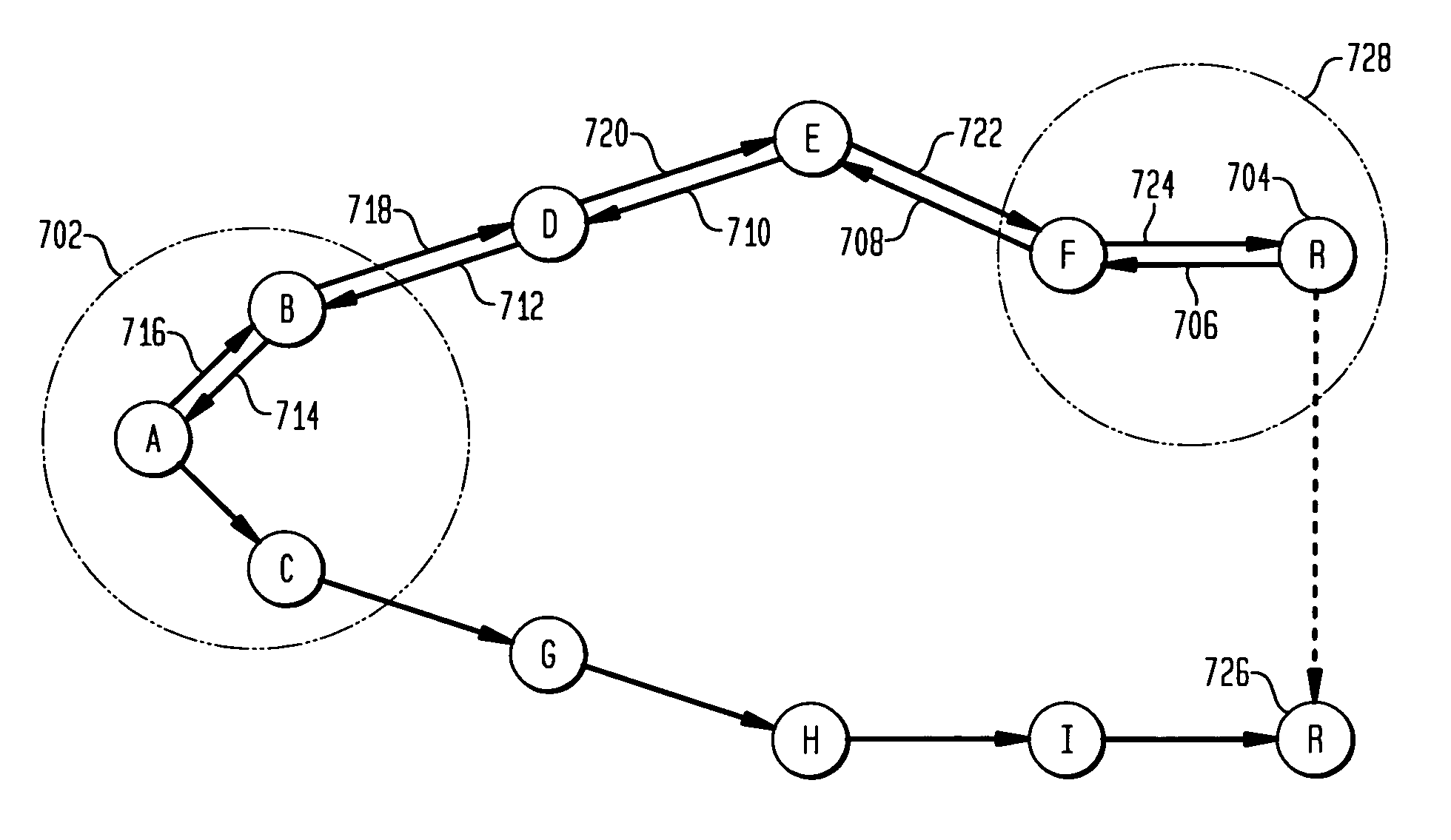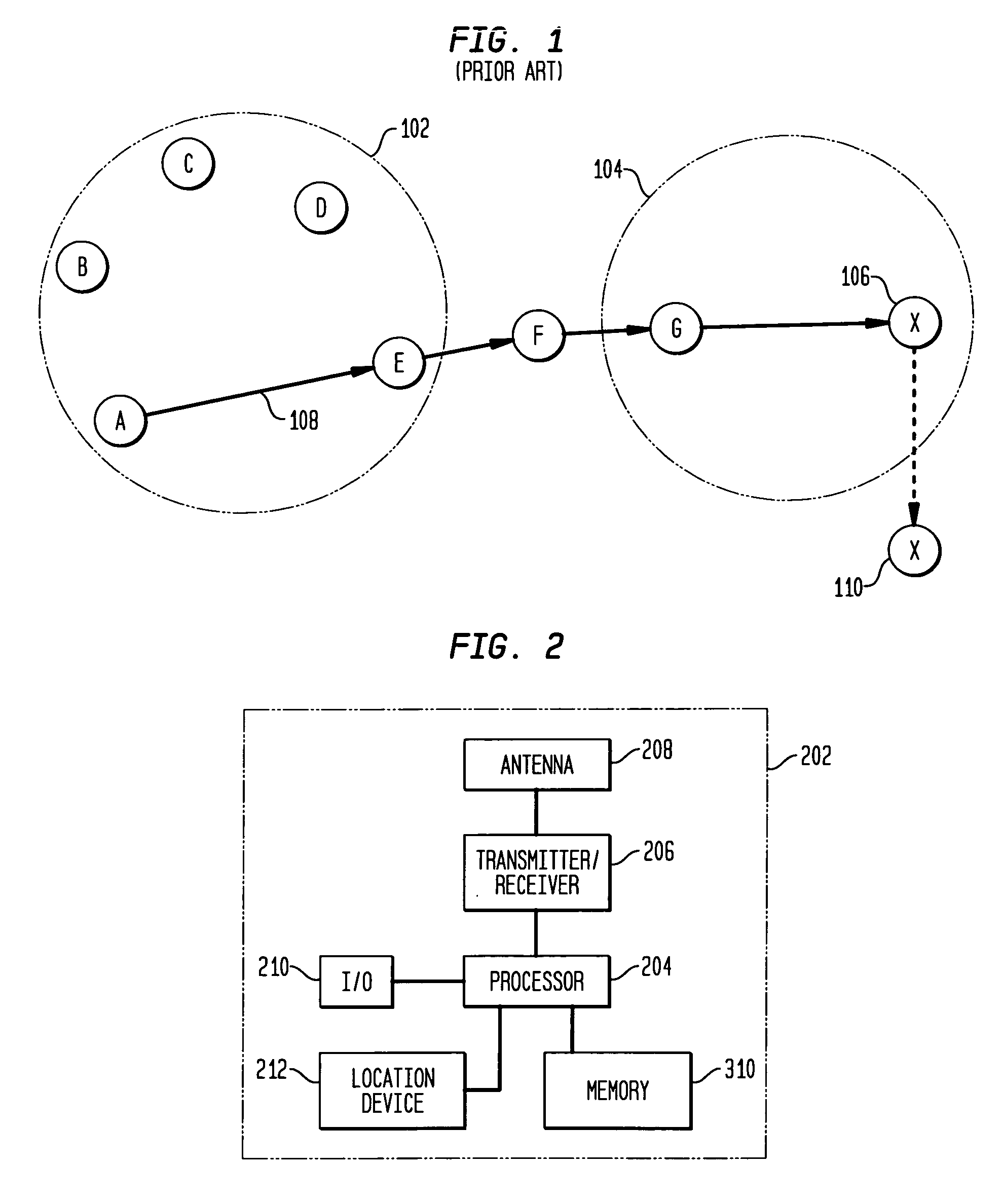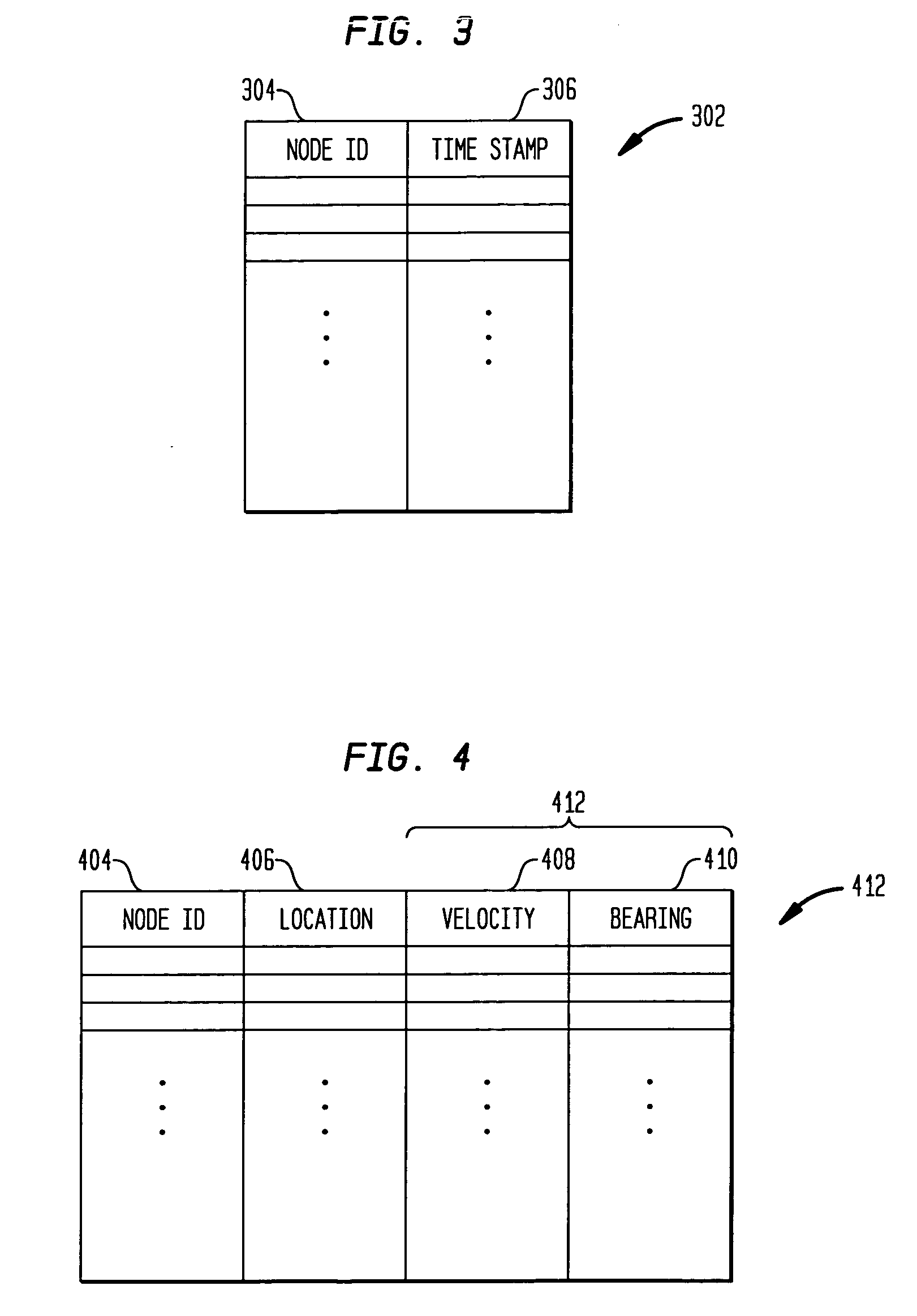Proactive location based routing in a wireless ad-hoc network
a wireless ad-hoc network and location technology, applied in the field of wireless communication, to achieve the effect of more accurate routing of data packets
- Summary
- Abstract
- Description
- Claims
- Application Information
AI Technical Summary
Benefits of technology
Problems solved by technology
Method used
Image
Examples
Embodiment Construction
[0023] As described above, ad-hoc wireless networks have no central control, and each wireless device which is part of the network operates as an individual communication device as well as part of the network infrastructure. Thus, each wireless device may originate and receive messages, but each wireless device also functions to route messages between other wireless devices which may otherwise be unable to directly communicate with each other. Instead of relying on wireless network infrastructure for communication, ad-hoc wireless networks rely on peer-to-peer interactions for network communication. The devices comprising an ad-hoc wireless network may be any type of wireless device (e.g., telephone, personal digital assistant (PDA), email device, computer, etc.). In the following description, the wireless ad-hoc network devices will be referred to generally as mobile nodes, and it is to be understood that the principles of the present invention may be implemented with any type of w...
PUM
 Login to View More
Login to View More Abstract
Description
Claims
Application Information
 Login to View More
Login to View More - R&D
- Intellectual Property
- Life Sciences
- Materials
- Tech Scout
- Unparalleled Data Quality
- Higher Quality Content
- 60% Fewer Hallucinations
Browse by: Latest US Patents, China's latest patents, Technical Efficacy Thesaurus, Application Domain, Technology Topic, Popular Technical Reports.
© 2025 PatSnap. All rights reserved.Legal|Privacy policy|Modern Slavery Act Transparency Statement|Sitemap|About US| Contact US: help@patsnap.com



